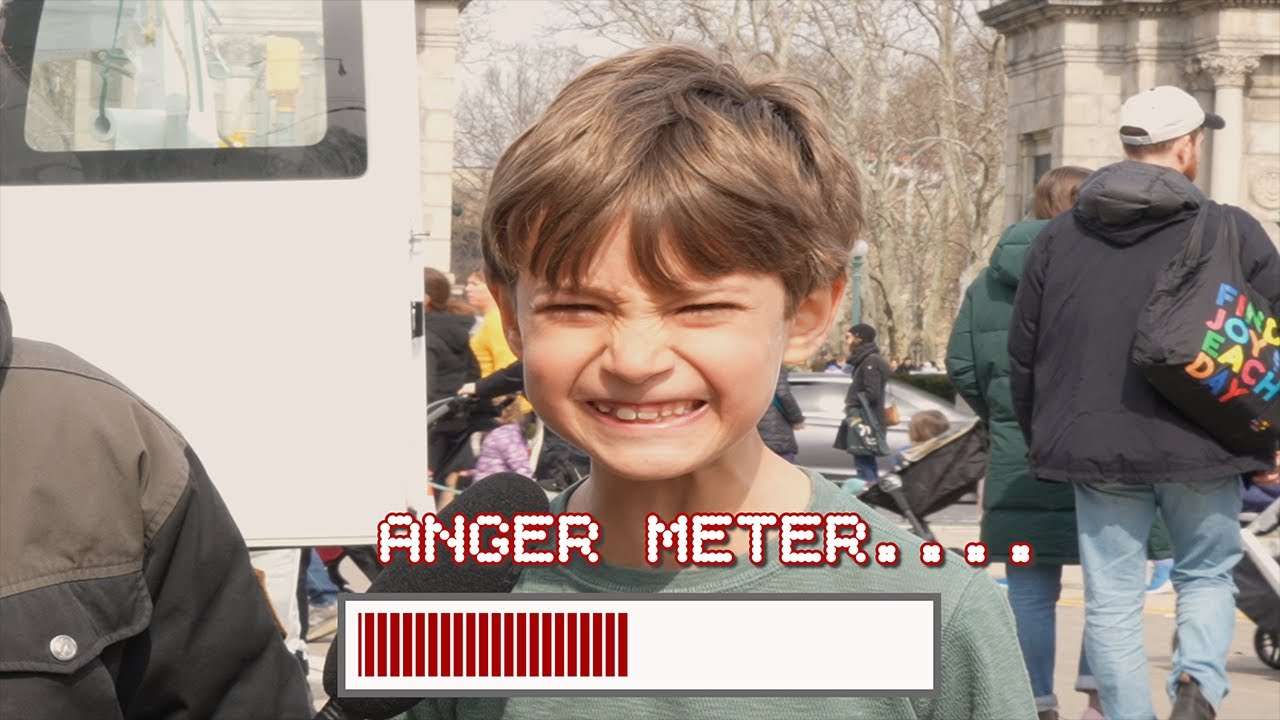The 20th century witnessed the destruction of the notion we had about ourselves as human beings. Rather than the dividing line on the Great Chain of Being, we were nothing more than the products of our childhood traumas suggested by Sigmund Freud’s tripartite theory of mind.
According to Freud, a person’s subconscious is shaped through their relations with certain people in their life. He also thought that organized religion, like the state and the culture, works as a collective superego that controls and represses the human urge to be a self. This notion of collective superego was extended by Carl Gustav Jung.
 The notion of collective consciousness was put forward by Carl Gustav Jung (Image: Lightspring/Shutterstock)
The notion of collective consciousness was put forward by Carl Gustav Jung (Image: Lightspring/Shutterstock)
Jung’s Theories about Collective Unconscious
Carl Jung was Freud’s best student and closest disciple, who continued Freud’s psychoanalytic movement. Jung did not see eye to eye with Freud about the notion of organized religion. He considered the religious impulse to be naturally and universally a part of human consciousness. His belief in the universal consciousness was the central difference between him and Freud, which permanently separated the two.
 Sigmund Freud did not accept the concept of the collective unconscious. (Image: Max Halberstadt/Public domain)
Sigmund Freud did not accept the concept of the collective unconscious. (Image: Max Halberstadt/Public domain)
While Freud did not tolerate any ideas that were against his, Jung had different views. He agreed with Freud about the subconscious as a repository of primal desires. He also believed in the Freudian concept that many forms of neurosis were the result of the conflicts between the conscious and the unconscious. But he held that Freud had failed to take into account what he called the ‘collective consciousness’ as an expansion of the id. The human subconscious is not only the repository of personal experiences and memories but also those of the whole of humanity. All human beings share a subconscious mind that stores the memories of all human beings, alive and dead.
According to Jung, we carry the memories of our ancestors in our subconscious. We use this collective unconscious to assign structure and meaning to the world.
This is a transcript from the video series Redefining Reality: The Intellectual Implications of Modern Science. Watch it now, on Wondrium.
What are Jungian Archetypes?
Jung had observed similar patterns in images, characters, and events recurring in myths, religions, and cultural beliefs. These communities and societies were unlikely to have been in contact with each other, but their central stories featured the same elements with the same roles.
Jung refers to these central elements as archetypes. Also, he called the repeated occurrences of these archetypes in cultures isolated from each other synchronicities.
 Carl Jung discovered patterns among cultures and societies and called them archetypes (Image: Prints & Photographs Division Library of Congress/Public domain)
Carl Jung discovered patterns among cultures and societies and called them archetypes (Image: Prints & Photographs Division Library of Congress/Public domain)
We can’t get specific detail of human history form the collective unconscious. What we get is a set of vague patterns, or archetypes. Our mind interprets the world and events using these archetypes and gives meaning to the world.
The differences we see in the specific features of each culture stems from the fact that each culture applies these shared archetypes based on their own geographical and historical peculiarities. But the central values are peculiarly common, so much so that, we cannot believe these cultures are independent of each other.
According to Jung, these patterns are both seen in the human mind and the whole world. He calls them collective unconscious noumena.
Learn more about the wisdom of crowds.
The Noumena and the Phenomena
The noumena had been distinguished from the phenomena by Immanuel Kant in the 18th century. According to this German philosopher, the phenomena are the experience of a thing by the human, and the noumena are the actual thing.
For example, when we look at a pen, we get an image of it and think we know something about the pen. But the image does not have a physical manifestation; it is just in our mind. There is no way of knowing that what is in the mind is similar to the real thing creating that image. Does it really have the same features, or do we just think that the features are the same? According to Kant, metaphysics is of no use since we only have access to phenomena. We can never get outside of our minds. Therefore, we can’t be sure about the reality.
But Jung had a different idea. For him, the collective unconscious connects the mind to the world. We can get to reality through the collective unconscious, to which all the human species are all connected. Jung stated that there were curious coincidences that could not be explained while they were not completely random. They cannot be happening randomly and must have some explanation. We take them as signals sent by the universe to us. Jung believed that these synchronicities show that this collective unconscious connects us.
Another similarity between Freud and Jung’s ideas is that both of them study humans not in a vacuum but in relation to other entities. For Freud, the relation between father and child determines the nature of the human mind and behaviors.
Jung’s final step is that he dismisses the object as an individual and considers a unified whole. The object does not matter in its own right; it is just a mode of the larger collective reality.
Learn more about where do people’s personalities come from?
Common Questions about Carl Jung and the Concept of Collective Consciousness
Q: What is Carl Jung’s theory?
Carl Jung’s theory is the collective unconscious. He believed that human beings are connected to each other and their ancestors through a shared set of experiences. We use this collective consciousness to give meaning to the world.
Q: What did Freud and Jung disagree on?
Freud and Jung disagreed on some key aspects. For example, Jung believed that religion was a natural part of human consciousness, but Freud thought of religion as a form of collective neurosis. Also, Jung believed in the collective consciousness, which permanently split the two.
Q: What is the best definition of archetype?
According to Jung, archetypes are similar patterns in image, characters, and events that repeat in myths, religions, and cultural beliefs from different communities that were unlikely to have been in contact with each other.
Q: What are synchronicities?
Jung considers synchronicities as the repeated occurrences of archetypes. Since these occurrences are seen in isolated cultures with no connection between them, Jung concludes that humans are connected through a collective unconscious.
Carl Jung’s Theories: Archetypes, & The Collective Unconscious
By Dr. Saul McLeod, published 2018
Carl Jung was an early supporter of Freud because of their shared interest in the unconscious. He was an active member of the Vienna Psychoanalytic Society (formerly known as the Wednesday Psychological Society).
When the International Psychoanalytical Association formed in 1910 Jung became president at the request of Freud.

Wednesday Psychological Society
However in 1912 while on a lecture tour of America Jung publicly criticized Freud’s theory of the Oedipus complex and his emphasis on infantile sexuality. The following year this led to an irrevocable split between them and Jung went on to develop his own version of psychoanalytic theory.
Most of Jung’s assumptions of his analytical psychology reflect his theoretical differences with Freud. For example, while Jung agreed with Freud that a person’s past and childhood experiences determined future behavior, he also believed that we are shaped by our future (aspirations) too.
Differences between Jung and Freud

Theory of the Libido
Jung (1948) disagreed with Freud regarding the role of sexuality. He believed the libido was not just sexual energy, but instead generalized psychic energy.
For Jung, the purpose of psychic energy was to motivate the individual in a number of important ways, including spiritually, intellectually, and creatively. It was also an individual’s motivational source for seeking pleasure and reducing conflict
Theory of the Unconscious
Like Freud (and Erikson) Jung regarded the psyche as made up of a number of separate but interacting systems. The three main ones were the ego, the personal unconscious, and the collective unconscious.
According to Jung, the ego represents the conscious mind as it comprises the thoughts, memories, and emotions a person is aware of. The ego is largely responsible for feelings of identity and continuity.
Like Freud, Jung (1921, 1933) emphasized the importance of the unconscious in relation to personality. However, he proposed that the unconscious consists of two layers.
The first layer called the personal unconscious is essentially the same as Freud’s version of the unconscious. The personal unconscious contains temporality forgotten information and well as repressed memories.
Jung (1933) outlined an important feature of the personal unconscious called complexes. A complex is a collection of thoughts, feelings, attitudes, and memories that focus on a single concept.
The more elements attached to the complex, the greater its influence on the individual. Jung also believed that the personal unconscious was much nearer the surface than Freud suggested and Jungian therapy is less concerned with repressed childhood experiences. It is the present and the future, which in his view was the key to both the analysis of neurosis and its treatment.
The Collective Unconscious
However, by far the most important difference between Jung and Freud is Jung’s notion of the collective (or transpersonal) unconscious. This is his most original and controversial contribution to personality theory.
The collective unconscious is a universal version of the personal unconscious, holding mental patterns, ormemory traces, which are shared with other members of human species (Jung, 1928). These ancestral memories, which Jung calledarchetypes, are represented by universal themes in various cultures, as expressed through literature, art, and dreams.
‘The form of the world into which [a person] is born is already inborn in him, as a virtual image’ (Jung, 1953, p. 188).
According to Jung, the human mind has innate characteristics “imprinted” on it as a result of evolution. These universal predispositions stem from our ancestral past. Fear of the dark, or of snakes and spiders might be examples, and it is interesting that this idea has recently been revived in the theory of prepared conditioning (Seligman, 1971).
However, more important than isolated tendencies are those aspects of the collective unconscious that have developed into separate sub-systems of the personality. Jung (1947) called these ancestral memories and images archetypes.
Jungian Archetypes
Jungian archetypes are defined as images and themes that derive from the collective unconscious, as proposed by Carl Jung. Archetypes have universal meanings across cultures and may show up in dreams, literature, art or religion.
Jungian archetypes are defined as images and themes that derive from the collective unconscious, as proposed by Carl Jung. Archetypes have universal meanings across cultures and may show up in dreams, literature, art or religion.
Jung (1947) believes symbols from different cultures are often very similar because they have emerged from archetypes shared by the whole human race which are part of our collective unconscious.
For Jung, our primitive past becomes the basis of the human psyche, directing and influencing present behavior. Jung claimed to identify a large number of archetypes but paid special attention to four.
Jung labeled these archetypes the Self, the Persona, the Shadow and the Anima/Animus.
The Persona
The persona (or mask) is the outward face we present to the world. It conceals our real self and Jung describes it as the “conformity” archetype. This is the public face or role a person presents to others as someone different to who we really are (like an actor).
The Anima/Animus
Another archetype is the anima/animus. The “anima/animus” is the mirror image of our biological sex, that is, the unconscious feminine side in males and the masculine tendencies in women.
Each sex manifests attitudes and behavior of the other by virtue of centuries of living together. The psyche of a woman contains masculine aspects (the animus archetype), and the psyche of a man contains feminine aspects (the anima archetype).
The Shadow
Next is the shadow. This is the animal side of our personality (like the id in Freud). It is the source of both our creative and destructive energies. In line with evolutionary theory, it may be that Jung’s archetypes reflect predispositions that once had survival value.
The Self
Finally, there is the self which provides a sense of unity in experience. For Jung, the ultimate aim of every individual is to achieve a state of selfhood (similar to self-actualisation), and in this respect, Jung (like Erikson) is moving in the direction of a more humanist orientation.
That was certainly Jung’s belief and in his book “The Undiscovered Self” he argued that many of the problems of modern life are caused by “man’s progressive alienation from his instinctual foundation.” One aspect of this is his views on the significance of the anima and the animus.
Jung argues that these archetypes are products of the collective experience of men and women living together. However, in modern Western civilization men are discouraged from living their feminine side and women from expressing masculine tendencies. For Jung, the result was that the full psychological development both sexes was undermined.
Together with the prevailing patriarchal culture of Western civilization this has led to the devaluation of feminine qualities altogether, and the predominance of the persona (the mask) has elevated insincerity to a way of life which goes unquestioned by millions in their everyday life.
Critical Evaluation
Jung’s (1947, 1948) ideas have not been as popular as Freud’s. This might be because he did not write for the layman and as such his ideas were not a greatly disseminated as Freud’s. It may also be because his ideas were a little more mystical and obscure, and less clearly explained.
On the whole modern psychology has not viewed Jung’s theory of archetypes kindly. Ernest Jones (Freud’s biographer) tells that Jung “descended into a pseudo-philosophy out of which he never emerged” and to many his ideas look more like New Age mystical speculation than a scientific contribution to psychology.
However, while Jung’s research into ancient myths and legends, his interest in astrology and fascination with Eastern religion can be seen in that light, it is also worth remembering that the images he was writing about have, as a matter of historical fact, exerted an enduring hold on the human mind.
Furthermore, Jung himself argues that the constant recurrence of symbols from mythology in personal therapy and in the fantasies of psychotics support the idea of an innate collective cultural residue. In line with evolutionary theory it may be that Jung’s archetypes reflect predispositions that once had survival value.
Jung proposed that human responses to archetypes are similar to instinctual responses in animals. One criticism of Jung is that there is no evidence that archetypes are biologically based or similar to animal instincts (Roesler, 2012).
Rather than being seen as purely biological, more recent research suggests that archetypes emerge directly from our experiences and are reflections of linguistic or cultural characteristics (Young-Eisendrath, 1995).
However, Jung’s work has also contributed to mainstream psychology in at least one significant respect. He was the first to distinguish the two major attitudes or orientations of personality – extroversion and introversion (Jung, 1923). He also identified four basic functions (thinking, feeling, sensing, and intuiting) which in a cross-classification yield eight pure personality types.
Psychologists like Hans Eysenck and Raymond Cattell have subsequently built upon this. As well as being a cultural icon for generations of psychology undergraduates Jung, therefore, put forward ideas which were important to the development of modern personality theory.
How to reference this article:
How to reference this article:
McLeod, S. A. (2018, May 21). Carl jung. Simply Psychology. www.simplypsychology.org/carl-jung.html
APA Style References
Jung, C. G. (1921). Psychological types. The collected works of CG Jung, Vol. 6 Bollingen Series XX.
Jung, C. G. (1923). On The Relation Of Analytical Psychology To Poetic Art 1. British Journal of Medical Psychology, 3(3), 213-231.
Jung, C. G. (1928). Contributions to analytical psychology. New York: Harcourt Brace
Jung, C. G. (1933). Modern man in search of his soul.
Jung, C. G. (1947). On the Nature of the Psyche. London: Ark Paperbacks.
Jung, C. G. (1948). The phenomenology of the spirit in fairy tales. The Archetypes and the Collective Unconscious, 9(Part 1), 207-254.
Jung, C. G. (1953). Collected works. Vol. 12. Psychology and alchemy.
Roesler, C. (2012). Are archetypes transmitted more by culture than biology? Questions arising from conceptualizations of the archetype. Journal of Analytical Psychology, 57(2), 223-246.
Seligman, M. E. P. (1971). Preparedness and phobias. Behavior Therapy, 2(3), 307-20.
Young-Eisendrath, P. (1995). Struggling with jung: The value of uncertainty. Psychological Perspectives, 31(1), 46-54.
How to reference this article:
How to reference this article:
McLeod, S. A. (2018, May 21). Carl jung. Simply Psychology. www.simplypsychology.org/carl-jung.html
Home
|
About Us
|
Privacy Policy
|
Advertise
|
Contact Us
Back to top
Simply Psychology’s content is for informational and educational purposes only. Our website is not intended to be a substitute for professional medical advice, diagnosis, or treatment.
© Simply Scholar Ltd – All rights reserved




